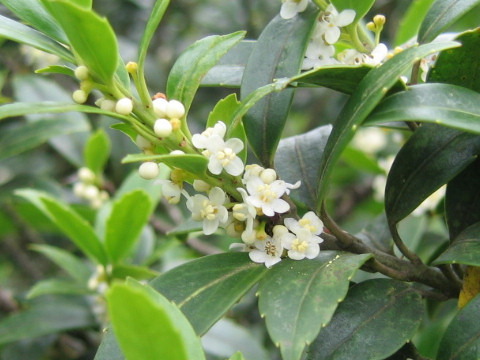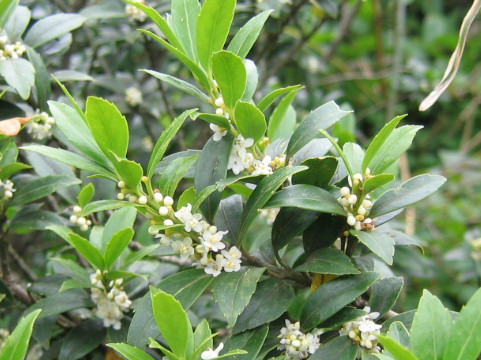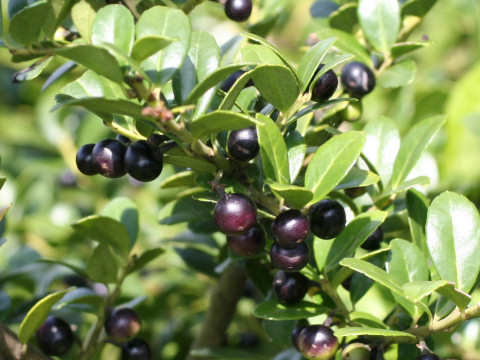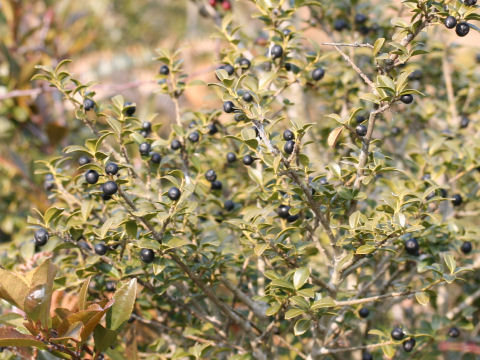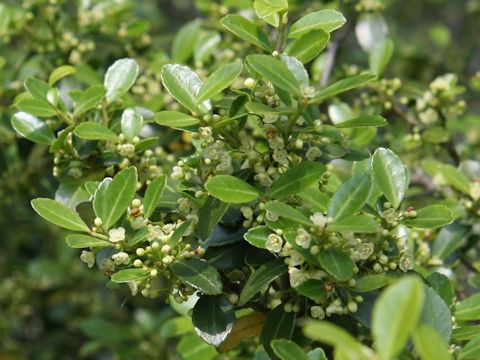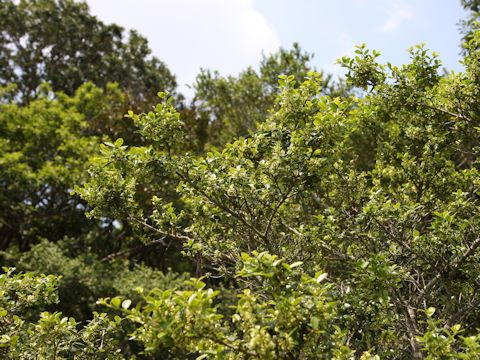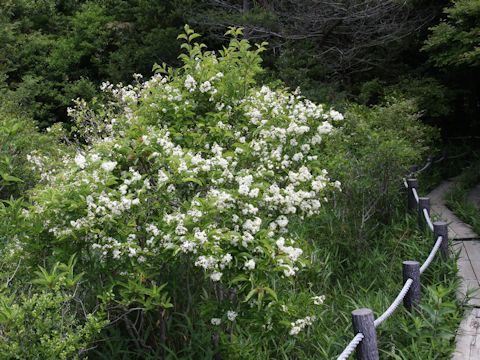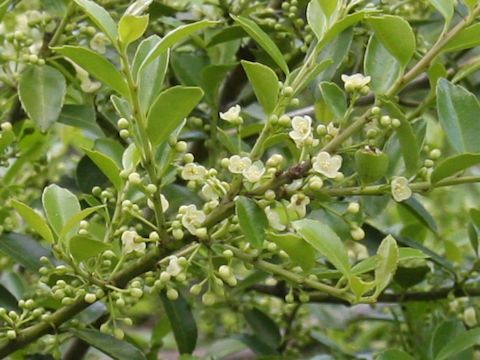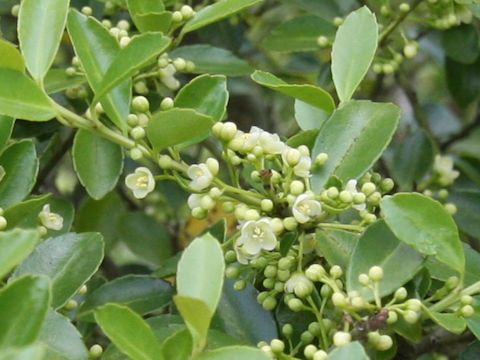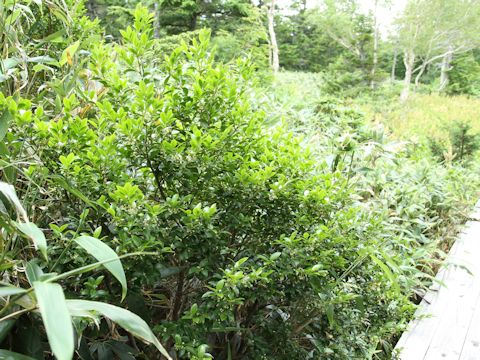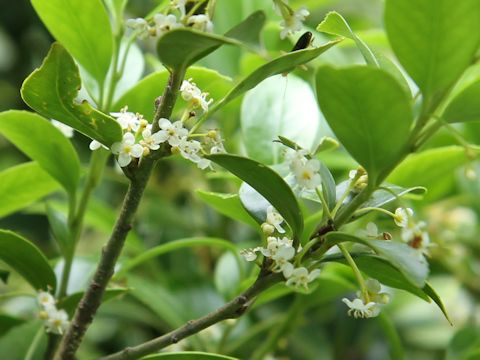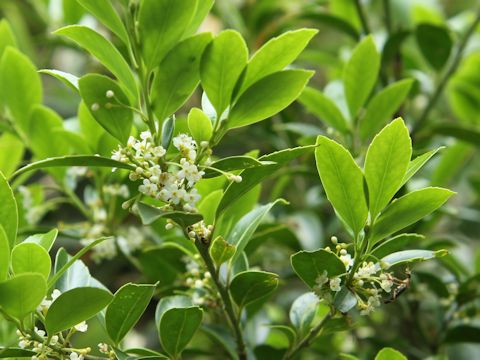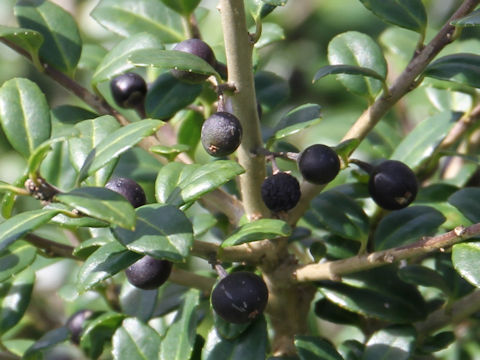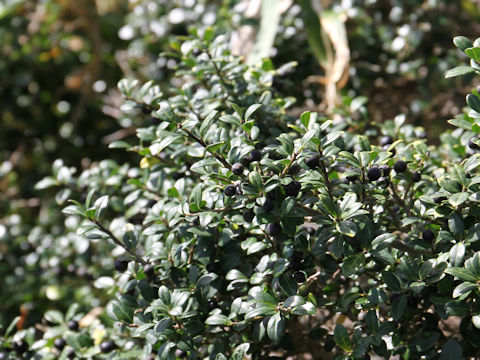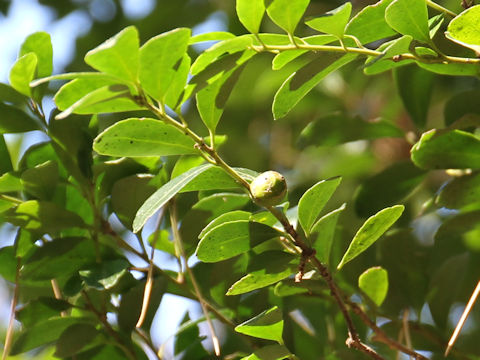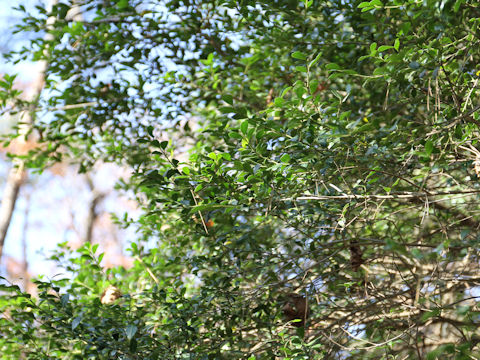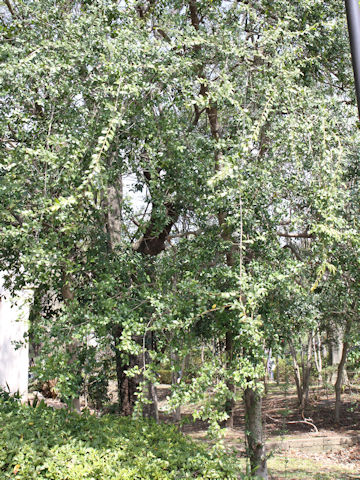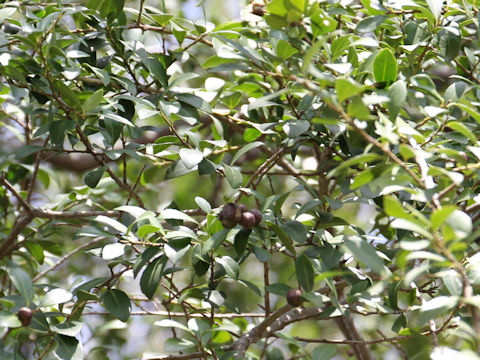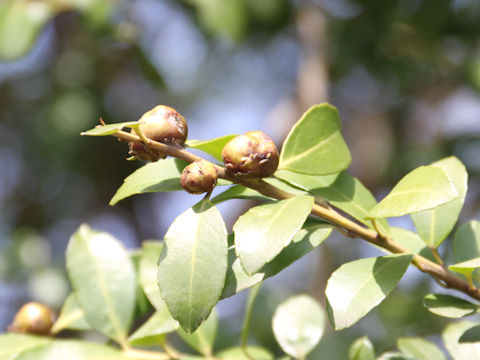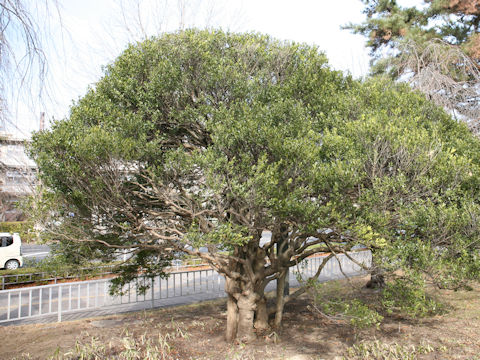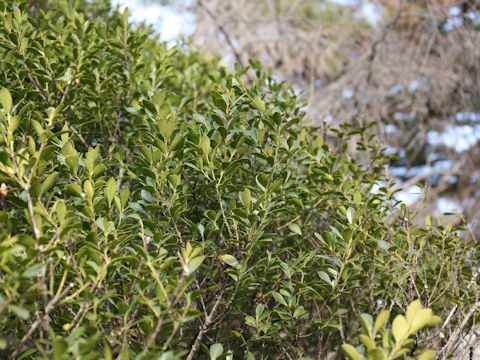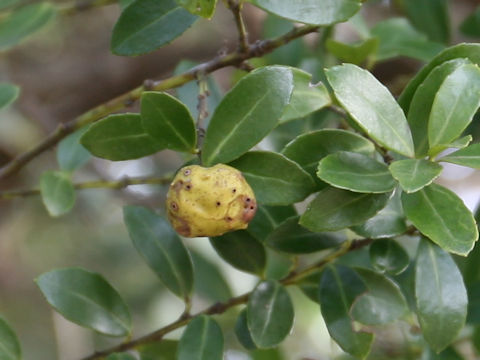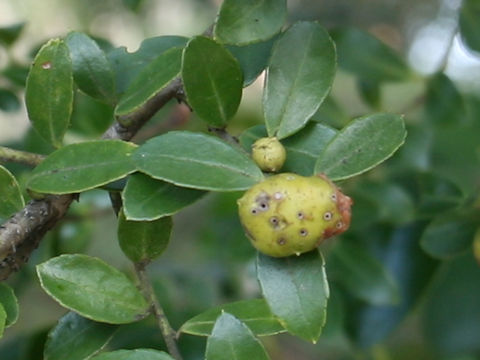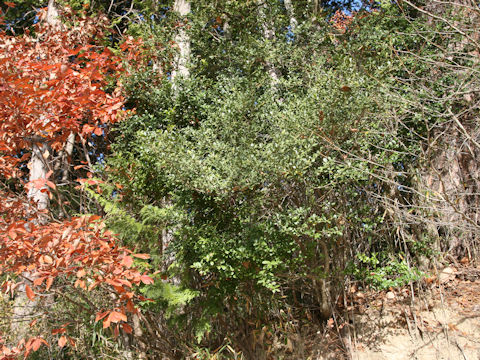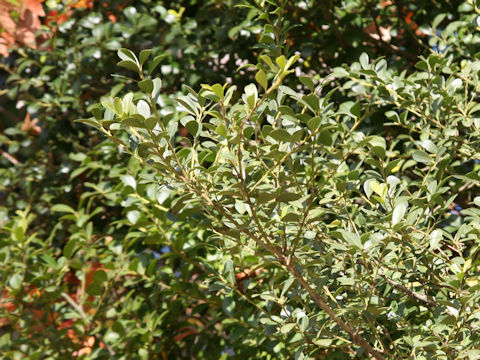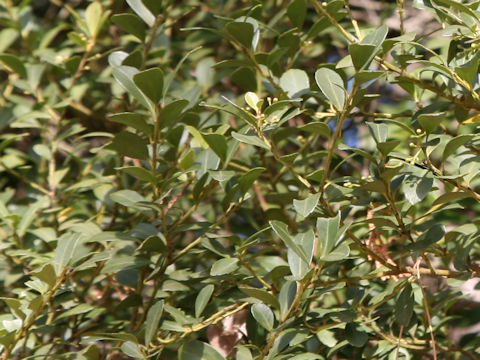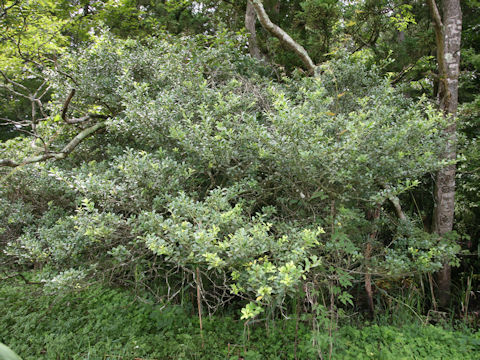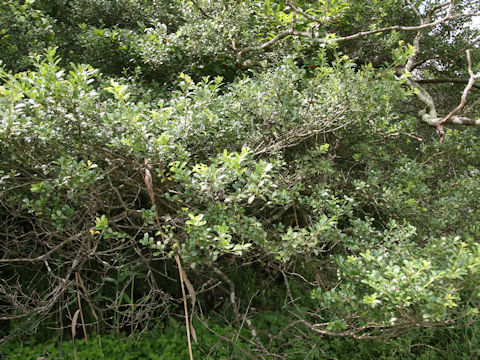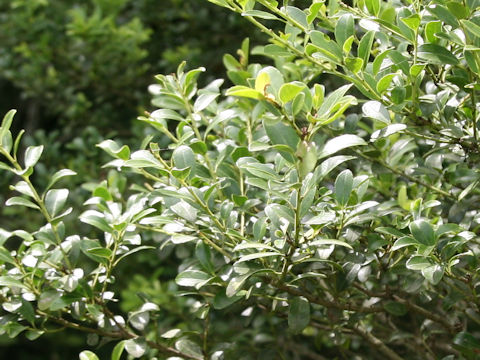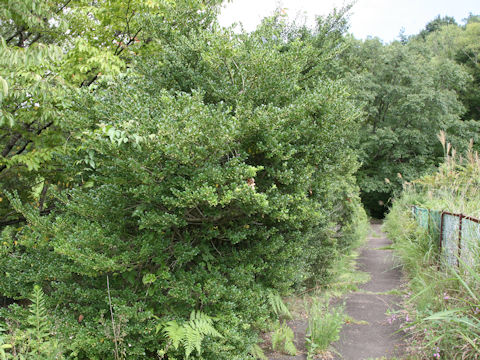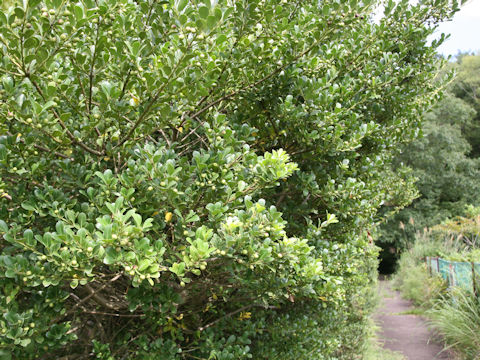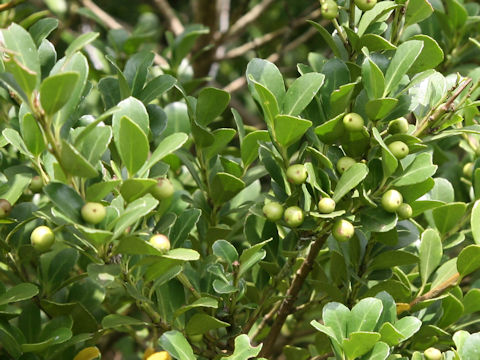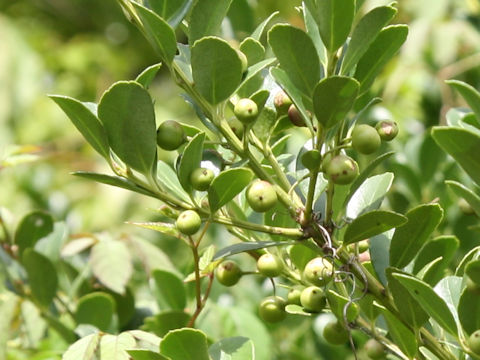
|
|
|
|
−− もっと見る(Show more)−−
−− 閉じる(Close) −−
|
|
|
|
わが国の本州以西から四国・九州それに台湾、朝鮮半島南部、中国東南部に分布しています。ふつうは低木ですが、まれに高さが15メートルほどになります。強い剪定にも耐えるため、刈り込みによる整形樹木として利用されています。葉は楕円形から長楕円形で互生し、縁には浅い鋸歯が数個あります。6月から7月ごろ、本年枝の葉腋に淡い黄白色の花を咲かせます。また果実は球形の核果で黒く熟します。和名は「つげ(黄楊)」に似ていて材質が劣ることから。台湾華語では「假黃楊」、中国語では「歯葉冬青(chi ye dong qing)」と呼ばれます。 写真中13、中16〜17、中20〜21は、イヌツゲタマバエがつくった虫えいの「イヌツゲメタマフシ」。 |
|
|
モチノキ科モチノキ属の常緑小高木で、学名は Ilex crenata。英名は Japanese holly。 |
|
|
The Japanese holly (Ilex crenata) belongs to Aquifoliaceae (the Holly family). It is a semi-tall evergreen tree that is native from Honshu west to Shikoku and Kyushu in Japan, as well as Taiwan, the southern Korean Peninsula and southeastern China. This tree is usually a small tree, rarely it can reach about 15 m in height. It is also tolerant severe pruning, and used as a topiary (trees molded into three dimensional forms). The leaves are alternate, elliptic to oblong with several low toothed edges. The pale yellowish-white flowers bloom in the axils of new branches from June to July. The fruits are globose drupes and ripen black. The Japanese common name is derived from "inu" (inferior) + "tsuge" (Japanese boxwood). It is called "假黃楊" in Taiwanese Chinese and "歯葉冬青" (chi ye dong qing) in Chinese. Photos 14th, 17th-18th, and 21st-22nd show a gall "Inutsuge-metamafushi", an insect fly created by Inutsuge-tamabae. |
|
|
[上・中1] 秋田県藤里町太良「駒ヶ岳」にて、2005年07月17日撮影。 [中2] 大阪府東大阪市上四条町「なるかわ園地」にて、2005年10月23日撮影。 [中3] 愛知県豊田市岩崎町「葦毛湿原」にて、2006年01月27日撮影。 [中4〜中7] 同上にて、2013年05月26日撮影。 [中8〜中10] 福島県福島市「栂平」にて、2013年07月20日撮影。 [中11・中12] 宮城県川崎町「山形神室岳」にて、2016年10月01日撮影。 [中13・中14] 宮城県仙台市青葉区「東北大学植物園」にて、2017年11月28日撮影。 [中15〜中17] 宮城県仙台市宮城野区「榴岡公園」にて、2019年04月14日撮影。 [中18〜中21] 同上にて、2021年02月12日撮影。 [中22〜中24] 宮城県仙台市青葉区「台原森林公園」にて、2023年12月05日撮影。 [中25〜中27] 宮城県村田町「浮島の植物群落」にて、2024年08月21日撮影。 [中28〜30・下] 宮城県仙台市泉区「真美沢公園」にて、2024年09月10日撮影。 |

|
|
Shu Suehiro |
